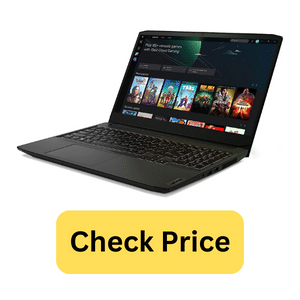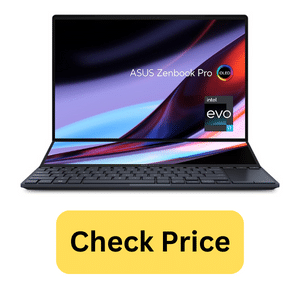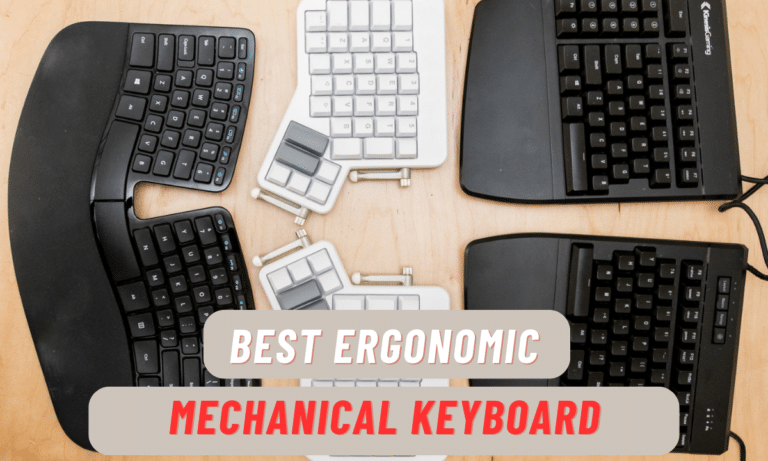Best Laptop For Instructional Design
Best laptop for instructional design. The laptop is the most important tool for instructional designers. It enables the creation of engaging learning materials, designs interactive courses, and develops multimedia presentations. Having the right laptop can significantly boost your productivity, efficiency and creativity.
Best laptop for instructional design For 2023
The right laptop empowers you as an instructional designer. It gives you the freedom to experiment, the processing power to bring complex visions to reality and the portability to work from anywhere. Choosing the perfect device for your specific workflow and professional demands is the first step toward designing at your highest level.
In this article, we’ll delve into the key aspects of selecting the best laptop for instructional design, guiding you through the important factors, tips, and tricks that will empower you to make an informed decision.
Our top picks: Best laptop for instructional design
Whether you’re designing e-learning courses, crafting engaging multimedia presentations, or developing interactive training modules, a top-notch laptop is your gateway to success.
1. Dell XPS 13: best laptop for instructional design

The Dell XPS 13 has been a go-to choice for Windows users seeking an alternative to the MacBook Air, and its 2020 iteration left a lasting impression with its remarkable screen, sturdy build, impressive performance, and extended battery life.
Intel’s processors have carved distinct niches: the H-series for power, the U-series for efficiency, and the P-series trying to balance both.
Moreover, Dell has adapted by dividing the XPS 13 line. The XPS 13 Plus caters to power-hungry users with its P-series OLED display, while the regular XPS 13, featuring the U-series, emphasizes portability and battery life. The latter is positioned as a versatile choice for a broader audience.
Also, I’ve spent the past few weeks with the regular XPS 13, and my experience is a mixed bag. It retains the commendable build quality that Dell is known for, but it falls short in certain aspects compared to its 2020 predecessor.
The display and speakers are satisfactory, and the availability of an off-purple color option adds a touch of personality. As one of the premier Windows laptops on the market, it delivers solid performance, yet it lags behind the prowess and efficiency showcased by today’s MacBooks. This serves as a testament to the current state of the Windows laptop landscape.
It’s noteworthy that the XPS 13 seems to have entered a transitional phase. While it remains a top-tier choice for those seeking a high-quality Windows laptop, it doesn’t match the exuberance it once carried. The spotlight is shifting from the XPS itself to the Windows ecosystem it represents.
Why you should buy the Dell XPS 13 for instructional design?
Dell XPS 13 continues to be a commendable option in the ultraportable Windows laptop category. It strikes a balance between performance and portability, and while it may not shine as brightly as it once did, it remains a strong contender in the ever-evolving world of laptops.
2. Apple MacBook Pro 13-inch (M1, 2020)

The Apple MacBook Pro 13-inch (M1, 2020) stands as a testament to Apple’s commitment to innovation and performance.
Despite sharing a design lineage with its predecessor, this laptop packs a punch with its incredible features and the game-changing M1 chip.
The MacBook Pro 13-inch (M1, 2020) carries forward the legacy of its predecessor while introducing remarkable upgrades. Its blistering performance, prolonged battery life, and compatibility with iOS apps make it an appealing choice for a wide range of users.
Moreover, The Magic Keyboard complements the overall experience, enhancing both comfort and productivity. However, the lack of a design overhaul and the limited port selection might leave some users wishing for more.
This laptop is proof that Apple’s dedication to refining its technology can lead to impressive results. The M1 chip sets a new standard for performance, and the MacBook Pro 13-inch (M1, 2020) harnesses this power effectively. While it may not have undergone a radical visual transformation, its internals represent a leap forward in computing capabilities.
Being an instructional designer, you’ll appreciate the nuanced balance that the Apple MacBook Pro 13-inch strikes between familiarity and technological advancement. While its design may not have undergone a radical transformation, the laptop’s internals tell a different story.
The integration of iOS app compatibility adds a new layer of versatility, enabling you to seamlessly access and utilize mobile applications directly on your laptop, thereby enhancing your workflow.
Why you should buy the Apple MacBook Pro 13-inch for instructional design?
The inclusion of the Magic Keyboard elevates your typing experience, ensuring comfortable and productive input. However, it’s worth noting that the design aesthetics have remained largely unchanged, which might not align with your preference for visual innovation.
3. Gigabyte Aero 17 – Best laptop for instructional designers

My friend, an instructional designer, whose journey into the realm of creativity has been transformed by the Gigabyte Aero 17 (2021).
As he embarked on a quest to enhance the learning experience through captivating visuals and engaging content, this laptop became his steadfast ally, empowering him to craft educational masterpieces.
From the very first encounter, the Aero 17 exudes an aura of excellence. Its robust build quality stands as a testament to its durability, promising to endure the rigors of a designer’s demanding lifestyle.
Moreover, The captivating design, an interplay of elegance and sophistication, mirrors the artistic endeavors it is destined to bring to life.
As my friend delved deeper into his projects, the Aero 17’s dazzling display came to life, rendering colors and details with such finesse that it felt like he was stepping into his creations.
Also, The immersive experience offered by the 17.3-inch UHD 4K OLED display was a revelation, allowing him to visualize his designs with unparalleled clarity. The laptop’s Pantone-certified accuracy ensured that his creations were a true reflection of his imagination.
Every intricate detail, every fine line, and every shade is brought to life with remarkable clarity, a testament to the Aero 17’s commitment to excellence. For an instructional designer, every pixel matters, and this laptop delivers with unwavering dedication.
Why you should buy the Gigabyte Aero 17 for instructional design?
If you’re involved in instructional design and seeking a powerful and reliable tool to enhance your productivity, the Gigabyte Aero 17 could be an excellent choice. With its robust performance, featuring top-tier processors and graphics cards, this laptop can handle resource-intensive tasks like video editing and 3D rendering with ease.
4. Lenovo IdeaPad Gaming 3 (2021) -best laptops configuration

The Lenovo IdeaPad Gaming 3 greeted him with an array of choices, each promising a unique blend of power and performance.
It is Powered by an AMD Ryzen 5 5600H or Ryzen 7 5800H CPU and adorned with NVIDIA discrete GPUs.Moreover, this laptop held the potential to handle not only instructional design tasks but also gaming adventures.
As an instructional designer, my canvas is a digital one, where every pixel matters. The IdeaPad Gaming 3 presented him with three 1080p display options, each with a different refresh rate – 60Hz, 120Hz, and 165Hz.
And, The lure of smoother transitions and crisper visuals beckoned, and he opted for the 120Hz variant. This display delivered a relatively clear image, a crucial element in capturing intricate details in multimedia presentations.
The IdeaPad Gaming 3 granted the freedom to expand his horizons, with user-upgradeable memory and storage drive options. A simple yet impactful feature, it ensured that his workspace could evolve alongside his imagination.
With 8GB offering lower frame rates and frequent stutters, the path was clear – 16GB of memory was the key to unlocking the full potential of this creative powerhouse.
The CPU remained steadfast, exhibiting minimal performance loss even during intensive tasks. This symphony of performance and passion was accompanied by the hum of cooling fans, a testament to the laptop’s dedication to excellence.
The fans, while efficient, proclaimed their presence with a resounding volume under load. A minor quirk, a testament to the laptop’s hard work in preserving optimal performance.
Why you should buy the Lenovo IdeaPad Gaming 3 for instructional design?
the Lenovo IdeaPad Gaming 3 (2021) a faithful companion. Its 120Hz refresh rate breathed life into his creations, while the user-upgradeable memory and storage drive ensured his workspace was limitless. As an instructional designer, I was no stranger to overcoming obstacles, and the laptop’s slow response time and occasional fan fervor were but small hurdles in a grander narrative.
5. Asus ZenBook Pro Duo 14 OLED -best laptop for industrial design

In the ever-evolving world of technology, where innovation constantly pushes boundaries, Asus stands tall as a trailblazer with the ZenBook Pro Duo 14 OLED. nd in the face of doubt.
ZenBook Pro Duo 14 OLED carries an air of distinction. The laptop presents itself with a dual-screen design, a concept Asus enthusiasts are no strangers to.
Moreover, a 14.5-inch screen graces the top, accompanied by a smaller 12.7-inch counterpart on the back of the keyboard deck, aptly named the ScreenPad Plus. oth productivity and entertainment.
The secondary screen has undergone a transformation of its own, evolving from a mere addition to an indispensable tool. Brighter and more vivid than its predecessors, it boasts a resolution of 2880 x 864 and a brightness level of 500 nits.
The inclusion of “anti-glare etching” dispels the nuisance of ceiling light reflections, allowing users to engage with content without distraction.
In a bold move, the ScreenPad morphs into a responsive touchpad at the touch of three fingers, a feat that adds a new layer of versatility. This transformation, dubbed TouchPad mode, extends the laptop’s capabilities, enriching the user experience.
However, no creation is without its nuances. Despite its merits, the ZenBook Pro Duo 14 OLED concedes to the limitations of personal preference. The keyboard’s position, while meticulously designed, still evokes mixed sentiments.
While some embrace its front-mounted layout, others, like the writer, find solace in traditional keyboard ergonomics. A matter of personal choice, it highlights the laptop’s willingness to cater to diverse needs.
Why you should buy the ZenBook Pro Duo 14 OLED for instructional design?
ZenBook Pro Duo 14 OLED is a compelling choice for professionals in instructional design due to its innovative features and powerful performance provide a versatile and efficient platform for creating engaging and effective educational materials. However, as with any technology purchase, it’s essential to consider your specific needs and compare with other available options to find the best fit for your instructional design requirements.
Buying Guide: How to Choose the Best Laptop for Instructional Design
Selecting the ideal laptop for instructional design requires thoughtful consideration of several essential factors. Here’s a comprehensive buying guide to help you make the right choice:
1. Performance Powerhouse: Ample RAM and Processor Speed
Your laptop’s performance directly influences your efficiency as an instructional designer. Opt for a laptop with a robust processor, such as an Intel Core i7 or AMD Ryzen 7, to handle demanding tasks effortlessly. Additionally, ensure a minimum of 16GB RAM to accommodate resource-hungry applications like graphic design software, video editors, and e-learning platforms.
2. Storage Solutions: SSD for Speed and Reliability
Quick access to your project files is crucial. A laptop equipped with a Solid-State Drive (SSD) ensures rapid loading times and smooth file management. Aim for at least 512GB of SSD storage to accommodate your design projects and software installations.
3. Stunning Visuals: High-Resolution Display and Graphics
Detail matters in instructional design. Choose a laptop with a high-resolution display (Full HD or higher) to visualize your content crisply. Dedicated graphics, such as NVIDIA GeForce or AMD Radeon, enhance your ability to create and edit multimedia elements seamlessly.
4. Portability and Battery Life: On-the-Go Productivity
Instructional designers often work on the move. A lightweight and portable laptop with a long-lasting battery can be a game-changer. Look for laptops with a compact design and a battery life of at least 8-10 hours to support your mobile creativity.
5. Ergonomic Design: Comfortable Typing and Stylus Support
Designing for hours can strain your wrists. Opt for a laptop with a comfortable keyboard layout and consider stylus support if you enjoy hand-drawn elements in your designs. An ergonomic design enhances your comfort during prolonged work sessions.
Tips and Tricks for Elevating Your Instructional Design
Maximize your laptop’s potential and elevate your instructional design process with these effective tips and tricks:
1. Master the Shortcuts: Boost Efficiency
Familiarize yourself with keyboard shortcuts and touchpad gestures specific to your laptop. These shortcuts can significantly speed up tasks like copying, pasting, and switching between applications, allowing you to work more efficiently.
2. External Monitor Magic: Expand Your Workspace
Increase your productivity by connecting your laptop to an external monitor. A dual-monitor setup provides extra screen real estate for arranging design tools, reference materials, and project previews.
3. Cloud Collaboration: Seamless Teamwork
Utilize cloud-based platforms for collaborative instructional design. Tools like Google Workspace or Microsoft 365 enable real-time document sharing and editing, promoting efficient teamwork and feedback integration.
4. Regular Maintenance: Optimal Performance
Keep your laptop in top shape by performing routine maintenance tasks. Regularly update software, run disk cleanup and optimization, and install reliable antivirus software to ensure smooth performance and data security.
FAQs:
What type of laptop is recommended for digital art?
Laptops such as the Microsoft Surface Book 3, Dell XPS 15, Lenovo Yoga C940, HP Spectre x360, and ASUS ZenBook Pro Duo offer a balanced combination of features, performance, and value for digital artists. Your choice depends on your specific needs, preferences, and budget.
Q2: Which laptop is best for product design students?
The Microsoft Surface Book 3, Dell XPS 15, Lenovo Yoga C940, HP Spectre x360, and ASUS ZenBook Pro Duo are excellent choices for product design students, providing the functionality and creative tools necessary for their academic journey.
Q3: What qualities define a good instructional designer?
A good instructional designer possesses a set of strategies to aid students in recalling facts. Exceptional instructional designers go beyond tactics and possess a deep understanding of how people learn, allowing them to create more effective and engaging learning experiences.
Conclusion:
Consider three excellent laptops for your needs: the Dell XPS 13, M1 MacBook Pro, and Gigabyte Aero 17. To detail review of these 3 laptops read the above article carefully.
If these options don’t suit you, look for laptops with at least 8 GB of RAM, a 256 GB SSD, and an Intel i5 or AMD Ryzen 5 processor. For better performance, aim for 16 GB of RAM, a 512 GB+ SSD, and an Intel i7 or AMD Ryzen 7 processor.
Don’t feel pressured to buy the latest models; older versions with the recommended specs can work well. You can also explore refurbished options for cost savings.







